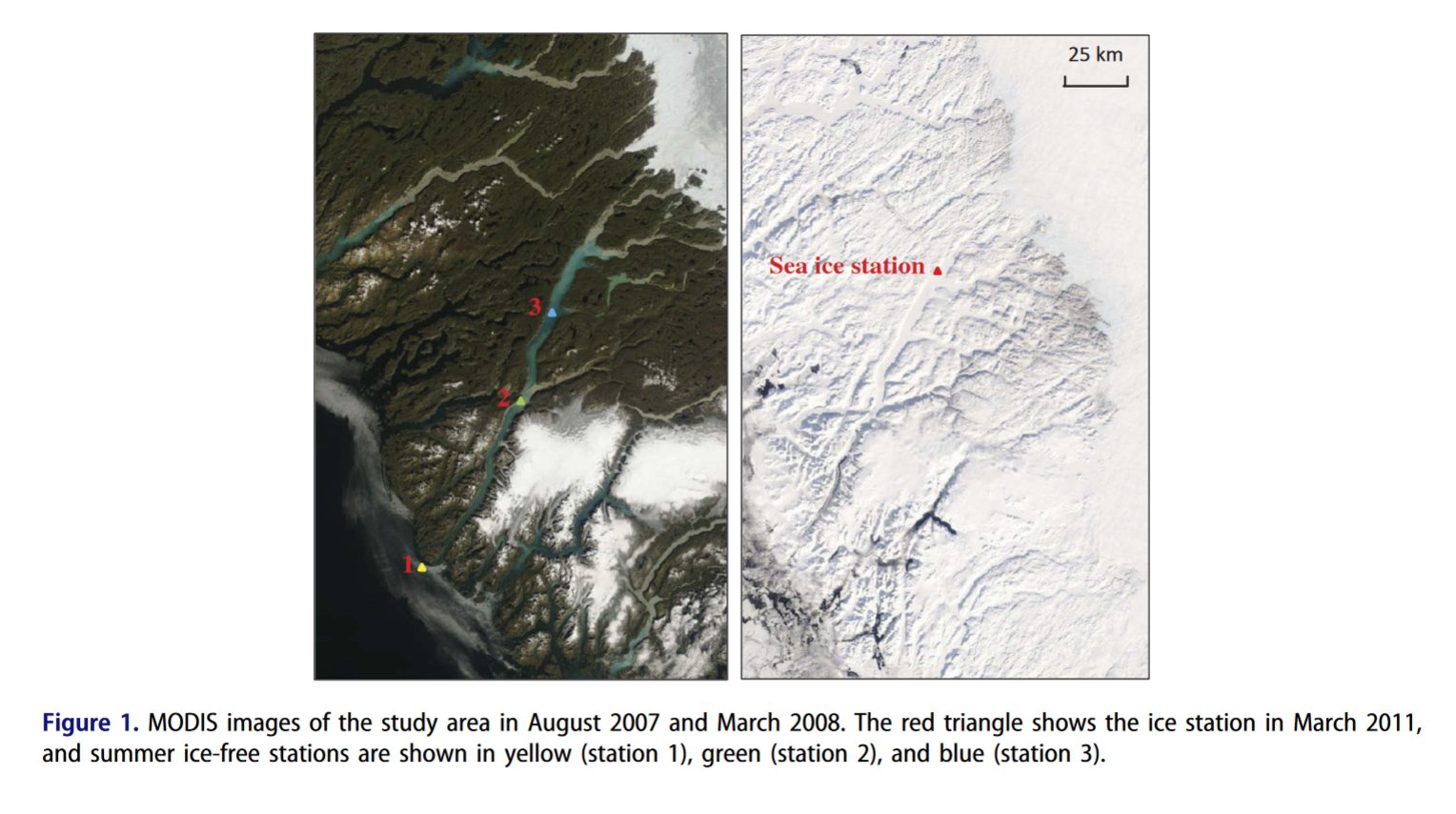Summer meltwater and spring sea ice primary production, light climate and nutrients in an Arctic estuary, Kangedussuaq, west Greenland
New publication by Lars Chresten Lund-Hansen, Ian Hawes, Morten Holtegaard Nielsen, Ingela Dahllof, and Brian K. Sorrell

Abstract:
The estuary is dominated by sea ice and snow cover from winter to spring, and a highly turbid meltwater plume during summer. The aims were to quantify the variability in optical conditions, inorganic nutrients, and primary production between these two extremes, and identify the drivers of variability. Data were obtained during a summer cruise along a transect in the estuary in August 2007, and a spring campaign on the ice in March 2011. The study comprises conductivity, temperature, and depth (CTD), K-d (PAR), K-d (A), PAR transmittance, photic depth, chl-a, nutrients (NO3, NO2, NH3 , PO4, and SiO2), primary production, and sediment concentrations. PAR transmittance varied between 5% below snow and ice and 85% in clear water with 44% in turbid meltwater. Primary production rates were similar below the ice in March (76.8 mg C m(-2) d(-1)) and in the highly turbid meltwater in August (94.8 mg C m(-2) d(-1)), but higher (246.6 mg C m(-2) d(-1)) at the mouth of the fjord. Meltwater inflow was the main driver of variability during summer and the snow and sea ice during spring. Under-ice primary production will increase three-fold with less snow on the sea ice, and the higher meltwater turbidity with increased melting of glacial ice and runoff will only reduce primary production slightly.
